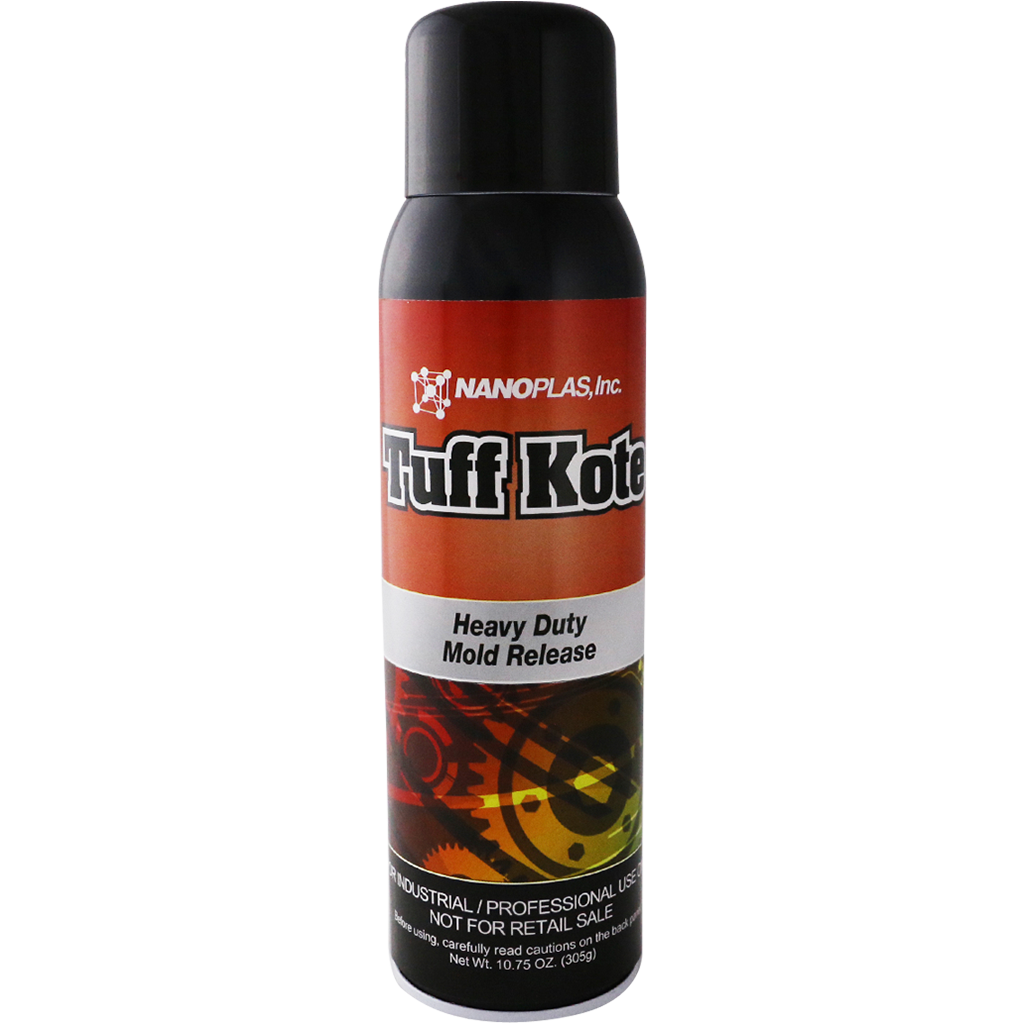Mold Releases
Our Tuff Kote and Dri-Kote are dry film mold releases that go on dry. The advantage of having a dry film is it reduces your chances of build up by making it hard to overspray. Less is more when applying our Tuff Kote and Dri-Kote! Our dry film properties help eliminate two of the main cost issues in molding – part quality and downtime.
Dri-Kote™
Dri-Kote™ mold release spray is a new, innovative formula designed to reduce the down time of applying mold release. It’s quick drying formula bonds to the surface of the metal, and lasts longer in the mold than traditional mold releases.
Tuff-Kote™
Key Benefits of Mold Release Spray
Our mold release spray is formulated to provide a clean, effortless separation between molds and finished parts, reducing defects and speeding up production. Its advanced lubricating agents ensure parts release smoothly, minimizing damage to both the product and the mold.
Using a high-quality mold release spray extends tool life, improves surface finish, and reduces the need for rework or secondary finishing. Whether you’re working with plastics, rubber, or composites, our formula enhances efficiency while lowering operational costs.
How Our Mold Release Spray Works
Mold release spray works by forming a micro-thin, heat-resistant layer on the mold surface, preventing the molded material from chemically bonding or mechanically sticking to the mold. This barrier layer allows for smooth part ejection without excessive force, preserving mold detail and accuracy.
Our release agents are designed for consistent application, quick drying, and easy cleanup, allowing for minimal downtime between cycles. The result is higher productivity and fewer part defects.
Use Cases & Applications for Mold Release Spray
Mold release spray is essential in a wide range of manufacturing processes, including:
- Plastic injection molding
- Compression molding for rubber parts
- Composite part manufacturing (fiberglass, carbon fiber)
- Thermoforming and vacuum forming applications
It’s especially valuable for complex or high-gloss parts where surface damage or sticking could result in costly rejects.
FAQs
Is Mold Release Agent Toxic?
Not all mold release agents are created equal. Some contain solvents or chemicals that require ventilation and protective equipment. Always review the Safety Data Sheet (SDS) to understand the handling requirements of your chosen product.
Does Mold Release Spray Affect Part Paintability or Bonding?
Some mold release sprays can leave residues that interfere with painting, printing, or adhesive bonding. However, our formula is engineered to be easily removed or used in paintable-grade applications, making it so downstream processes are not compromised.
What’s the Difference Between Mold Release Spray & Mold Cleaner?
Mold release spray creates a protective barrier to aid part removal, while mold cleaner removes buildup, residues, and contaminants from the mold surface. Both are important in a proper mold maintenance routine.
Better Together
When used in tandem, Nanoplas products can help you significantly reduce costs, downtime, scrap, and more. Scientifically formulated, each product is individually effective, so when used together, they enhance mold performance significantly.


